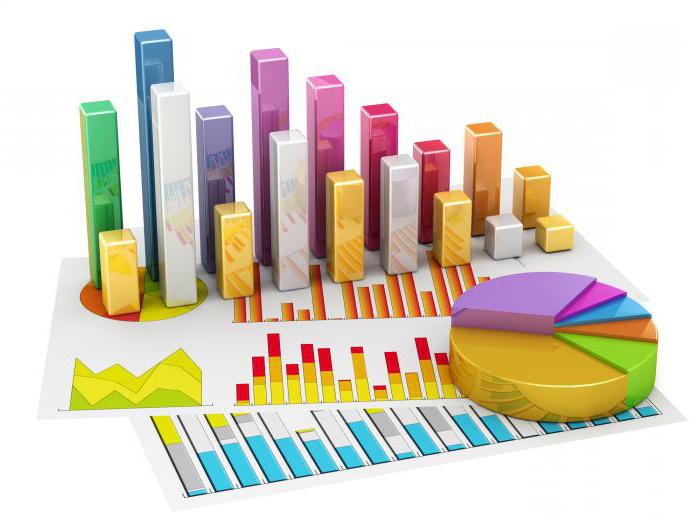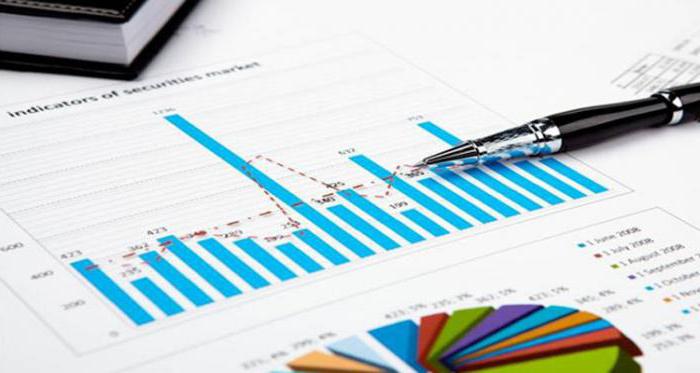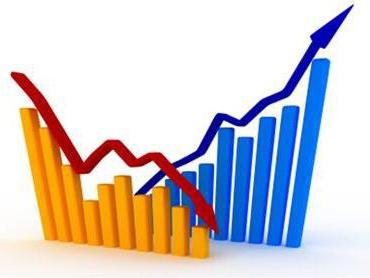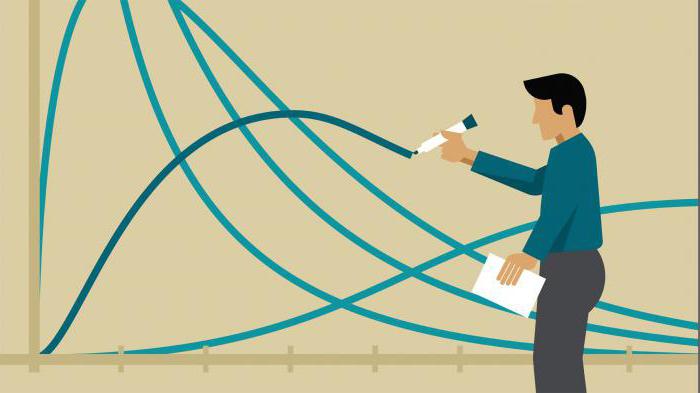Today, all countries carry out state regulation of economic activity to a greater or lesser extent. Methods differ, but the goal and result of such an intervention are the same - successful development of the national economy. And for the implementation of regulation, statistical information is needed that would allow an objective consideration of the situation and its change. Countries began to create their own statistical tools, and over time, the so-called system of national accounts appeared, allowing states to compare economic successes and learn from experience. 
History of the concept
The System of National Accounts (SNA) began to emerge in the 1930s. After the Great Depression and World War II, many countries sought to strengthen their national economy through public administration. And for the development of macroeconomic policies, measures and programs, statistical information was needed.
In the years 1940-1950, the vast majority of the leading capitalist countries began to develop their own concepts of the SNA. National economies needed restructuring in a civilian fashion. Soon, the concept of a system of national accounts penetrates the reports of leading international organizations. The United Nations has made a huge contribution to the development of the concept. This organization has prepared the first international standard of the SNA, published in 1953. Even then, the usual division of production by industry, as well as a detailed breakdown of financial flows, was carried out. Since then, it has been revised three times: in 1968, 1993 and 2008. However, the principle of calculating SNA indicators has remained the same. Today, there are many local adaptations of the methodology, a significant contribution to the development of the concept is made by the UN, IMF, World Bank, OECD, Statistical Office of the European Communities. 
Essence
SNA is a set of economic tables reflecting the costs and income of economic activity within the state. The main indicators of the system of national accounts characterize:
- release of goods and services;
- formation, primary and further distribution, use of national income;
- change in property structure;
- financing and lending.
The system of national accounts allows you to streamline all available information about economic activities. It takes into account all areas of production. However, the SNA does not include the release of goods and services by households, the use of an intermediate product and the illegal economy. The system of national accounts displays all stages of the reproduction process. The output is balance tables characterizing the change in the country's national wealth over a certain period of time, often a year.
Structural categories
The main accounts of the United Nations system of national accounts include:
- Gross production indicators. This is a production account.
- Indicators of the primary distribution of cash receipts. This is an income account.
- Transfer redistribution indicators.
- Household Expense Account.
- Capital related indicators.
- Financial transaction account.
- Indicators of changes in the value of assets.
- Asset and liability account.
- Payment balance.
Account data includes numerous applications and subcategories that are needed in order to objectively review transactions between different sectors. However, it must be understood that not all UN countries collect these indicators in full.For example, an asset and liability account is still under development. The UN is also trying to create a methodology for the category of strategic reserves and natural resources. 
Classification of indicators
The structure of the SNA reflects the activities of four economic agents and the circulation of factors and money between them. These are households, firms, states, and the so-called foreign sector or the "rest of the world." The main indicators of the SNA are: GNI, GNP net national product, personal and national income. The system of national accounts thus characterizes certain aspects of national wealth.
Measurement methods
When considering a system of national accounts, GDP is always in the foreground. It represents the total market value of all goods produced in the country for the year. Unlike GNP, this indicator does not take into account who owns the factors used in the process.
There are several methods for calculating it. The first is in terms of costs. All cash costs of consumers, firms and the state, as well as net exports are summarized. Thus, an investment in the system of national accounts is also taken into account in the form of investments in the commercial sector.
The second method of calculating GDP is by income. In order to exclude double counting, in this case, a value added indicator is used. Both methods of calculating GDP should give the same result. However, in practice, the numbers may vary slightly. GNP is the difference between GDP and net exports. The calculation of this indicator is similar to that already considered.
Net export is the ratio of the final cost of goods sold abroad and purchased in other countries. Typically, the difference between GDP and GNP is small and amounts to about 0.5-1.5%. Using these two indicators, the system of national accounts is supplemented by a whole series of indicators. Among them:
- NNP, or net national income. This is an indicator that objectively characterizes the country's production potential. It only considers net investments. NNP is equal to the difference between GNP and depreciation. The latter is transferred to the cost of goods produced gradually, so it makes no sense to take it into account twice.
- National Income (NI). It represents the total value of goods produced and services rendered. For its calculation, it is necessary to deduct indirect taxes from the NNP.
- Personal income (LD). This indicator characterizes the total earnings of economic entities. Unlike ND, this is income received. This indicator is extremely important for the characterization of the national economy, since not all income goes to the disposal of resource owners. LD is equal to ND minus social insurance contributions, income tax, transfers and interest on government bonds.
- Disposable Personal Income (RLD). This indicator is the difference between the LD and individual taxes.
- Net factor income (PFD). The indicator characterizes the ratio between the earnings of citizens of a country abroad and foreigners in its territory.

Purpose of the SNA
Today, the system of national accounts is being developed by many international organizations, not just the UN. The main purpose of using the SNA is to provide an integrated, complete system of accounts to compare the economic successes of different countries of the world. Individual states may use the standard to create their own variations. The systems of some countries, for example, France, the USA and China, are significantly different from the version of the SNA adopted by the UN. However, this is not a problem. They provide enough data to be processed in accordance with the UN standard. 
Data publishing
Indicators become the basis of annual (quarterly) reports on GDP, investments, capital transactions, government spending and foreign trade. They reflect the entire national economy.The system of national accounts characterizes its individual parties, and then allows you to build on their basis a competent macroeconomic policy.
Data is often revised because it is collected from a huge number of sources using various estimation methods, which leads to the fact that the numbers in the reports may vary slightly. And this must be taken into account when using them in research.
The system of national accounts of Russia
In Soviet times, the country had alternative concepts for measuring the success of economic activity. To analyze social production, the balance of the national economy (BNH) was used. It was based on the views of Karl Marx and Adam Smith. The most important indicator of the BNH was the total social product, as well as real income. In 1988, GDP was included in the balance sheet. This deepened the analysis of the economy and brought it closer to Western standards. After the collapse of the USSR, this concept was recognized obsolete; a transition to the SNA was made. The application of the system of national accounts in the Russian Federation has three problems. Let's consider each of them.
The problem of identification of goods and services. It is connected with the fact that sometimes it is difficult to distinguish production from consumption. This problem is especially pronounced nationwide in the service sector. It is believed that it grows from the imperfection of the economy, and not from the weakness of its scientific analysis. The less effective is the institutional structure of the economy, the greater the volume of goods and services produced are not economic benefits.
Another difficulty is the double counting problem. It is due to the fact that most products are intermediate. At first glance, this problem is easy to solve, considering only the final products. However, not all so simple. Closed cycles are common in production, which complicate the search for the final product. A peculiar way out is to record goods and services not at market prices, but at value added, but it is not perfect. 
A huge problem for Russia and other developing countries is the huge coverage of the shadow sector. It is not fully accounted for in GDP, and in size can sometimes even exceed it.
Quality and coverage
As mentioned above, many countries have their own modifications of the SNA. Therefore, the quality and scope of systems of national accounts can vary significantly from state to state. And there are several reasons for this:
- different levels of investment in statistical calculations;
- difficulties in assessing economic activity in some countries due to the expansion of the shadow sector, illiteracy of the population, geographical factors, socio-political instability, extremely high mobility of human resources and assets, which is especially typical for countries in Sub-Saharan Africa;
- differences in the autonomy of statistical agencies;
- the mismatch between the levels of development of statistics as a science in the countries of the world;
- The UN standard is only a planned, and not a unified system, which should be implemented in all states, so the latter, due to their capabilities and needs, can modify it, which sometimes can lead to a decrease in the quality of economic assessment and coverage of areas.
Criticism of the concept of GDP
Despite the fact that the SNA is widely used, there are scientists who are very skeptical about its performance. However, it is often not the GDP itself that is criticized, but its use. For example, the famous economist Joseph Stiglitz notes that this indicator is by no means identical with the welfare of the nation. Three of the most common approaches to criticizing GDP are based on this idea.
Feminist approach
Representatives of this approach, in particular, Meleline Waring and Maria Mies, believe that the main problem of the SNA is that it does not take into account unpaid work, for example, housewives.This leads to a distortion of reality. In many OECD countries, feminists' objections were taken quite seriously and began to evaluate homework in time use reports. Sometimes statistics are also considered regarding how much a woman could earn if she were paid. It is estimated that homework could account for about half of GDP.
Marxist attitude
Initially, representatives of this direction tried to create their own alternative concept. They believe that income in the SNA is displayed incorrectly and is greatly overrated. The existing system, according to Marxists, does not give an exact answer to the question, how much do people get after all. 
System of national accounts - statistics and its display
Another problem of the SNA is the differences in the calculation methodology in different countries. For example, Jochen Hartwig believes that the difference in GDP growth between the US and the EU after 1997 is not due to the real situation, but to a change in the way they are estimated. Statistical calculations are quite expensive, they are easy to manipulate, so they do not always truly reflect reality.